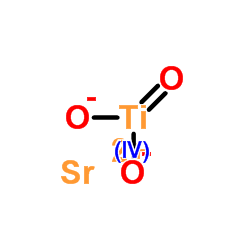| 结构式 | 名称/CAS号 | 全部文献 |
|---|---|---|
 |
钛酸钡
CAS:12047-27-7 |
|
 |
钛酸锶
CAS:12060-59-2 |
| 结构式 | 名称/CAS号 | 全部文献 |
|---|---|---|
 |
钛酸钡
CAS:12047-27-7 |
|
 |
钛酸锶
CAS:12060-59-2 |